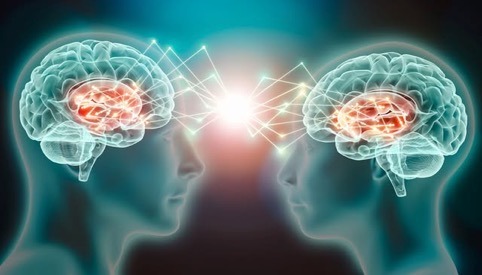Psychotherapy and Eating Disorders
...The relationship with food reveals the sensitivity of our minds...
2/17/2025


Psychotherapy and Eating Disorders
Anorexia and bulimia are a mental illness with serious negative physical and psychological consequences for a person's life. Eating disorders involve extreme behaviors, feelings, and attitudes towards weight and food. While symptoms revolve around food, their causes are mainly related to emotional factors experienced by the individual. Restriction and control can be used as a means of managing feelings of anger, disappointment, anxiety, and insecurity.
Bulimia nervosa and anorexia nervosa have commonly been considered “modern” disorders, as there has been a significant increase in their incidence over the past two decades. Hunger, food quality, family, and social factors, as well as self-imposed control, seem to significantly affect the development of the disease. Advertisements and models that dictate the fashion industry seem to be equally influential in the development of the disorder.
Eating disorders are characterized by intense preoccupation with food behavior and are accompanied by feelings of sadness or over-concern with the body's weight. These disorders are often accompanied by other mental health disorders, such as depression, substance abuse, and anxiety disorders, which can lead to death.
The psychological aspect of eating disorders includes chronic and recurrent behaviors that have serious physical health consequences and comorbidity with other psychological problems.
An eating disorder is characterized by a severe disturbance in eating habits. Anorexia nervosa and bulimia nervosa involve a distorted body image and a preoccupation with weight as an essential component.
The existence of factors that perpetuate and sustain the disorder, such as the anorexic body image and the physical effects of malnutrition in combination with a distorted body image, create a nutritional imbalance and lead to the development of the disorder.
Anorexia is a complex mental disorder with serious negative physical and psychological consequences. It is a disease that affects people at all stages of their lives, regardless of age, sex, or socio-economic status. A characteristic of the disorder is a person's refusal to maintain a minimum normal body weight, a strong fear of becoming fat, and an altered body image. Through weight reduction, an individual experiences a temporary emotional satisfaction because it gives them a sense of control over themselves. Food, the image of the body, and strong anxieties can become a major focus of attention and can dominate a person's thoughts, leaving them with little time for friends, work, and other activities that used to bring them joy.
Ambition, setting high goals, competitiveness, achievements, and, more generally, their overall behavior seem to contribute significantly to the development of the disorder.


Anorexia is the need for thinness, which is essentially precluded by “wounds” experienced by the patient. The causes of the disease are difficult to identify both for the patient and for those around them, which means that any visit to a doctor is usually due to the consequences of the disorder, such as constipation from the use of laxatives, depression, anxiety, muscle pain, and amenorrhea in women.
Bulimia is a serious and life-threatening eating disorder characterized by recurring episodes of binge eating followed by inappropriate compensatory behaviors, such as self-induced vomiting, use of laxatives or diuretics, excessive exercise, or a combination of these behaviors.The reasons for the development of the disorder are genetic factors in combination with environmental, social, and cultural conditions prevalent. Special weight is given to the existence of a psychological background for the development of the disease, as social pressure, negative relationships within the family, a poor self-image, a lack of self-confidence, lack of communication, and isolation contribute significantly to this direction. Low self-esteem, incomplete emotions, insecurity, and feelings of anxiety experienced by the patient are common characteristics of bulimic individuals and seem to contribute to the development of the disorder as a way of managing negative feelings.
The need for social acceptance and recognition reaches a point where they become perfectionists and set unrealistic and unattainable goals. All this psychological pressure and self-harm eventually leads to a loss of control over their actions, which leads to binge-eating episodes as a means of finding temporary relief.
Bulimia as a disorder is more common than anorexia and occurs in individuals with a history of obesity, whether they had previous binge-eating episodes and used laxatives or induced vomiting or developed bulimic tendencies after anorexia.
The disease reflects a lack of ability to manage feelings of anger, anxiety, sadness, loneliness, and pain, while, for others, it is a part of the triggers and demands they set for themselves. In many cases, before the disorder develops, there are signs of high rates of depression, which continue even after the individual recovers and are mainly evident in the first years of adolescence. However, it is not true that these rates are equally significant in the other age groups. Bulimia and anorexia are a disease that mainly affects the female sex as it is 8-9 times more common in women than in men.
Research has shown that a significant factor in the development of the disease is the functioning of neurotransmitter systems. Serotonin and endorphins, when their levels change in the body, can lead to the development of bulimia or anorexia. Increased levels of serotonin in the brain seem to reduce the desire to intake food, while the disturbance in serotonin involved in the process of satiety seems to be responsible for prolonging the binge-eating behavior.
Psychological reasons are one of the most important factors in the development of eating disorders. The individual's inability to solve problems, the difficulty of expressing emotions, unpleasant childhood experiences, and low self-esteem are some of the emotional states. In the adolescent phase, psychological and hormonal changes that occur seem to affect the functioning of the individual, presenting symptoms of anxiety and depression, thus facilitating the development of the disease.
Negative attitudes of parents towards their children's weight and body shape tend to create specific attitudes and contribute to the development of the disorder. Many cases of bulimic individuals have described growing up in a family environment where there were large and hearty meals or, on the other hand, in families where there were restrictive and specific meals, resulting in the development of the disorder once they left their homes.
Most of the treatment of eating disorders consists of restoring nutrition and psychotherapy, while the pharmacological approach has a more limited role and is mainly called upon to meet different needs for each patient.
Psychotherapy is based on the analysis of behavior and aims to change the relationship between an individual and their content. It is a long-term process that is based on the development of a good relationship between the therapist and the patient. It explores the individual's childhood, focusing on their relationships with family and friends in the first stages of their life and investigates the way in which they contributed to the formation and adoption of a specific eating habit. The therapist explores the emotional conflicts experienced by the patient and the way in which they contributed to
the disorder of eating habits, and, with careful attention, helps them to overcome them.In addition to individual psychotherapy, group psychotherapy is also effective, especially for individuals with eating disorders. It combines psycho-social support, cognitive, and somatic exploration in relation to food. Through participation in the therapeutic group, individuals gain empowerment, develop self-esteem, and learn to manage their emotions and their situation. A therapeutic group, which is often homogeneous, is composed of individuals who usually face similar or related problems. The advantages of group psychotherapy are numerous, including the creation of hope, universality, group cohesion, personal learning, and avoiding social isolation and alienation.The therapeutic approach that is adopted involves monitoring the individual's physical health, addressing the underlying psychological issues simultaneously.
Somatic Psychotherapy combines the mind and body and is an essential complementary component of immediate assistance for people in need when they decide to throw away the unnecessary weight or when they have eating disorders. Through the process of individual and group psychotherapy, individuals learn to come closer to themselves, to understand and acknowledge their real needs, the most authentic feelings and deepest thoughts they have so that they can function more clearly and make a decision about a good eating behavior. The body, with all its characteristics, memories, and reactions, is an excellent tool for the more complete development and maturity of the individual, recognizing what hinders them from having
Contact


